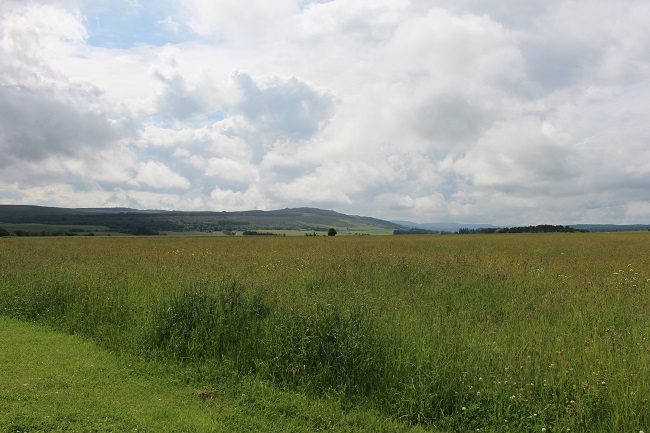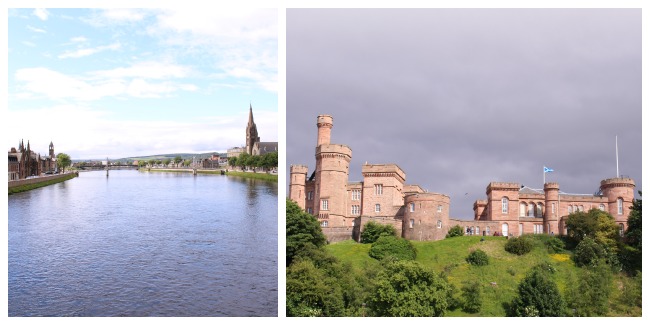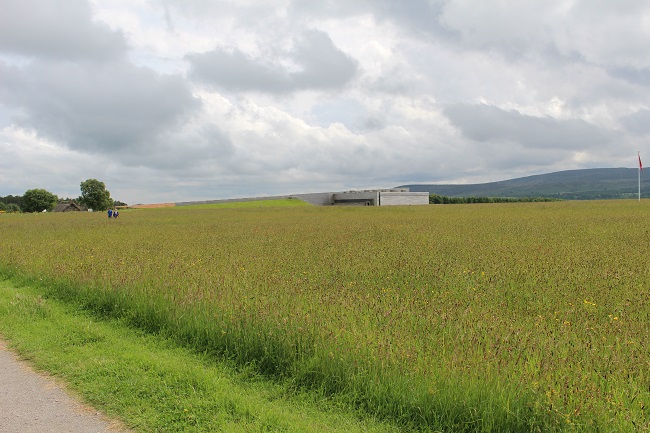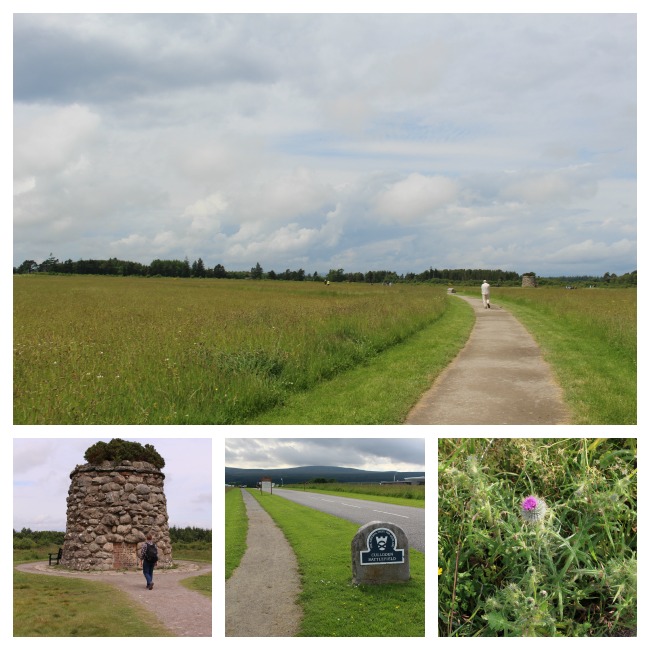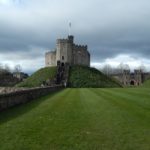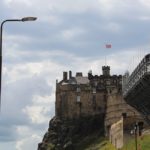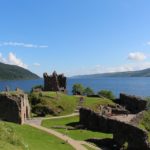After visiting Edinburgh, Ryan and I took the train north to Inverness. We wanted the chance to get out of the city and see lush beautiful Scottish countryside. In addition to what we wanted to see, my friend Sarah-Jane who is from Inverness wrote me a list of foods, restaurants, pubs, and sites to take in while we were on holiday. We were prepared for a glorious Highland getaway.
I found Inverness really charming. Running practically through the middle of town is the River Ness. I’m always thrilled with being near the water, it just makes me feel happy and alive so Ryan and I sat on a bench and people watched and enjoyed the beautiful scenery. We also looked at Inverness Castle, but only from the outside because sources told us it wasn’t worth going in. We listened to Scottish Music at Gellions Pub (have I mentioned that I truly love bag pipes?). And we had a steak dinner at McGongall’s, where I tried haggis again and a soup called cullen skink. Throughout our entire time in Inverness we found people to be so friendly, warm, and happy. It was a real pleasure all of it. Still, one of the things I really wanted to do was get out of town, walk out in nature, learn some history, and see a Highland cow.
On a Sunday Ryan and I decided to go see Culloden Battlefield, and thereby check off nature and history from the list. We were warned buses don’t run as well on Sunday, but we were going to try our luck. At the bus station the attendant even told us that we could not take the bus Google maps recommended as the remaining walk would be alongside busy roads with no sidewalks. Ryan is brave and said we should do it anyway, and thankfully we did because it was the best.
We took the bus as far as it would go towards Culloden and we were dropped off a little over a mile away. It’s true, there wasn’t a sidewalk but there was a dirt path and we did see about half a dozen other people walking along as well. As we walked to Culloden we passed a number of farms and we saw cows in the distance, but also some horses and goats up close. I have never been so excited to be out of the city as I was when I stood 4 feet away from a goat and it looked at me and bleated. (As if it were saying, “hey girl what are you looking at?”) We also saw a box that said “eggs” and it was half full of duck and chicken eggs with a box to pay on the honor system. Did you know that sometimes duck eggs are blue? I didn’t, but that day I saw one.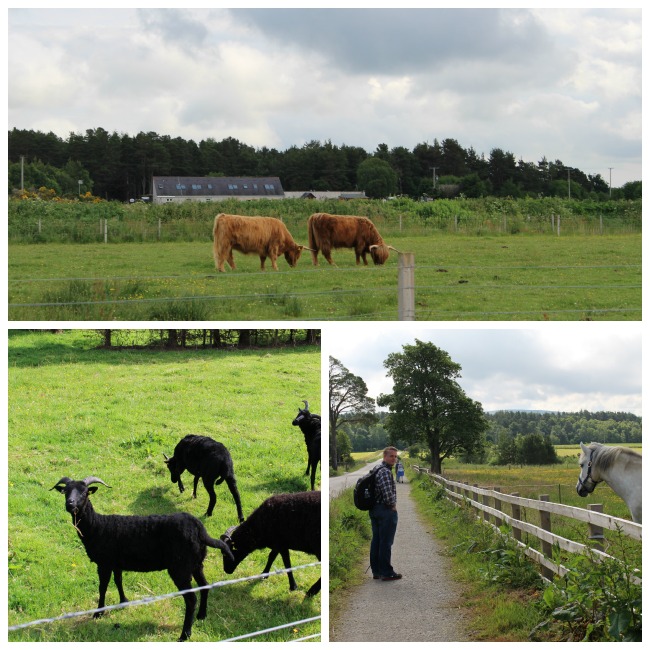
As we got closer to Culloden, it got more beautiful. There were flowers and thistles, and finally, right before we arrived at the visitor center I saw it… a Highland cow! There were three in total and they were so gorgeous with their tawny shaggy hair. Giddy might be the only way to describe how I felt.
The battlefield itself is a really nice place to visit. You might think, it’s just a field. But the museum and audio guide do such an incredible job of bringing the events to life. Ok so here is the briefest history of the Battle of Culloden. It was the final battle of the Jacobite rising that started in 1745. The Jacobites were supporting Charles Stuart, or Bonnie Prince Charlie, as he tried to regain the British throne. The Stuart side was also largely Catholic, whereas the Government side, supporting the Hanover king George I, was largely Protestant. A lot of Highlanders were on the Jacobite side but there were Scottish people also supporting the Government.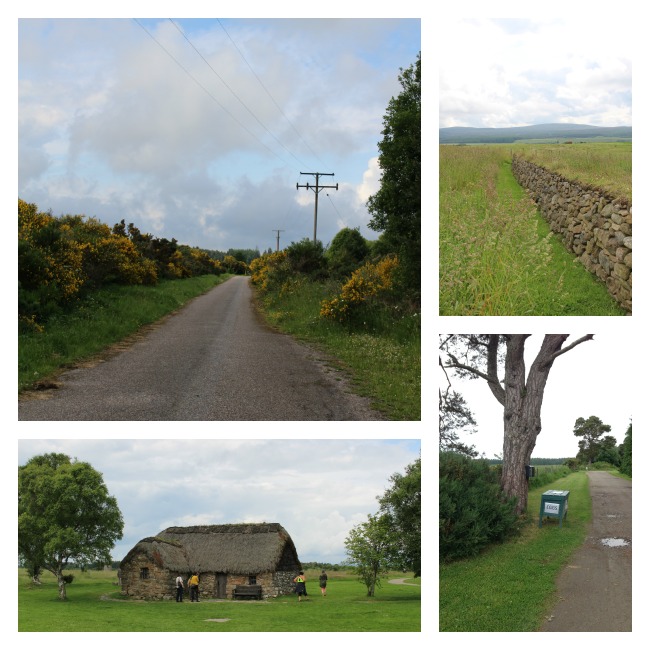
During this battle the Jacobites intended to surprise attach the government during the night, but things became disorderly and they lost the element of surprise. The whole battle lasted less than an hour, around 2,000 people were killed (mostly Jacobites about 1,500 people). Bonnie Prince Charlie’s hopes for the throne were over and he escaped, lived in France, and never returned to Scotland. Depending on how you look at it, to punish the Scottish or to integrate them further into British culture, the kilt and tartan were banned. That law was repealed in 1782.
In the visitor center there’s a museum that outlines what each side was doing in the build up to the war. The museum is basically a long corridor and one side outlines the Jacobites and the other the Government. Throughout the middle are objects and stories that apply to both sides. So, as you go through you get a full and clear picture of the motivations, preparations and struggles from each side and then how they interacted and dealt with each other. At the end, after viewing the battlefield the museum continues and there’s only the Government side and the opposite wall is black. It is a really well done museum with objects, stories to read, and oral histories to hear that make it a multi sensory experience accessible to everyone.
At the end of the museum there’s a short film that shows what the battle looked like. They warn you that it’s intense, and it really is. We walked into a room and were surrounded by screens that showed the battle. All around us were people screaming, wielding weapons, and killing each other. It was mayhem, and loud, and full of blood. It was hard to watch and brought to reality how intense and terrible the battle would have been.
Outside on the battlefield, it’s gorgeous and in stark juxtaposition to the graphic film we saw inside. There were rolling hills, flowers, and boggy scraggly plants. It was wonderful to be outside and take in the history of the place. The audio guide is connected to a GPS and as we walked around it pinged with new information about the battles. Together with the information in the museum, it really brought to life what happened there. We saw how far apart the arms started, we walked on the squishy uneven ground and felt how difficult it would have been to move around, and we marveled at the landscape.
A historic battlefield can seem like just an open piece of land, but this place made it so much more. It was exquisite to be outside in nature, see some things I had been hoping to see, and we leaned a little more about Scotland. I highly recommend a trip to Culloden Battlefield, and especially if you take the scenic walk from a bus stop one mile away.

